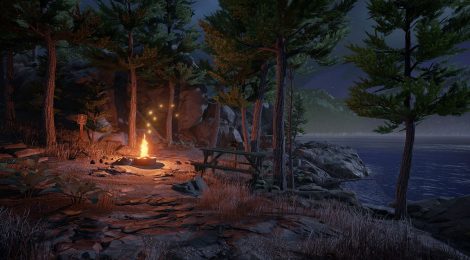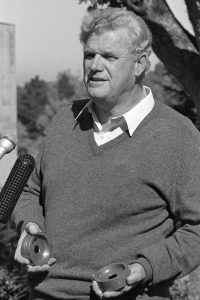
Can’t See The Forest For The Trees
A quest to understanding the forest ecology before diving into the trees.
There are MANY pathways in cold fusion based on experiments and observations.
Explaining the need for Atom-Ecology.
The 30 year history of exploration of cold fusion has produced a profound test of the reductionist notions of how science ought to proceed. That reductionist view is to focus on the minutia before observing the whole, holistic, ecos. As a practicing ecologist I learned this 40+ years ago in my first forays into the ecological classification of temperate forest ecosystems. My professor/partner Marc Bell was an inspiration to me as he was far more interested in the forest than the trees.
My other inspiration was my father who was a uranium geologist and metallurgist, while he spent his life in his laboratory he took we kids into the world as rockhounds on weekends and holidays, there we learned that to find the interesting gems and minerals one had to first learn to identify and environments in which they might occur. We had the advantage as kids of having Geiger counters and short wave UV lamps which allowed us to search in the atom-ecology of nuclear rocks and minerals.
Campfires in the wilds
I keep being asked by colleagues and others what the heck is Atom-Ecology and why this manner of thinking and seeking is important. This is of course because of the promise of cold fusion which when its discovery was brought to prominence in this world it was heralded at being of importance that my friend and collaborator, Dick Taylor winner of the Nobel Prize in Physics for the quark, once said to me in response to how he ranked the discovery of cold fusion. His reply was ‘ just slightly ahead of the discovery of fire.’
Dick’s other sage comment to me came when I called to tell him about my findings of massive helium in my cold fusion experiments and request that he sit with me to review the data and tell me what he thought.
“That’s easy Russ, it’s all horseshit, but that’s a religious conviction of course, get over here to my office (at Stanford) and show me that data.”
Today, nearly 30 years after Fleischmann and Pons announced their first glimpses of cold fusion. What TIME Magazine proclaimed to be ‘A STAR IN A JAR’, a grand exploration began. As quickly as cold fusion appeared in the world of science it was attacked by trolls and ne’re do wells as being impossible. Where was the radiation they demanded. All nuclear reactions come with radiation, ‘where there is nuclear fire, there must be nuclear ash.’ Cold fusion was proclaimed by the high priests and prelates of physics as being either the product of fools or frauds. History now reveals it was those very priests of physics who were the fools and frauds defending their religious convictions and paychecks.
For years the search for the smoke from the cold fusion campfires
Here’s my cold fusion camping and woodcraft guide. It’s about some of the trees that we have clearly identified in what is a complex atom-ecology, a vast forest where the atoms accumulate and aggregate in Nature and where at times in particular micro-environments in that forest the glimmering fires of cold fusion burn bright.
My good friend Tom Passell who has for decades been a companion in this exploration always admonished me, just get out there and make the observations the say, “data speak to me.”

My chart of helium being produced in one cold fusion experiment and reported on in Wired Magazine 1998 – click to read more
1. The most common cold fusion reaction(s) produce 4He (at times 3He) where the energy must be coupled to the lattice in some coherent manner, aka thermalized alphas. This was proposed in the very first days of cold fusion and reiterated by many. The only two experimentalists who ever produced palpable heat and commensurate helium were Arata and myself.
Arata who met me for the first time while I was making helium at Stanford Research invited me to bring my sonofusion kit to his lab which I did under the terms that he’d show me his if I showed him mine. Both of our experiments produced vast amounts of helium orders of magnitude about the 5.22 ppm 4He found in the atmosphere. A few others have run experiments which yielded orders of magnitude lower helium leading to the endless argument over that helium being real cold fusion or a leak. Helium is the major product of D+D cold fusion and is seen as a thermalized alpha emission.
2. A much less prolific branch of cold fusion produces lovely gammas and there are so many in the gamma forest that it will take considerable effort to identify them all. Some jump right out of the computer screen with obvious and understandable identities, luckily the gamma channels are not so prolific as the helium channels or experimentalists seeing the gammas would prove cold fusion via the dead experimentalist proof. The forest is a wonder to behold.
3. Neutrons are yet more proof of additional channels of cold fusion, it seems to me they are, thankfully, at a much lower level than the gammas.
4. Strange particles and radiations are also a feature of cold fusion and a precious few have been able to see these. When I first did so in a hot dry cold fusion experiment in my first cold cathode cold fusion light bulb I feared I had fatally irradiated myself. Colleagues at a national lab thought the same but when I proved to be a live cat is Schrodinger’s box the mystery took another turn.
Edward Teller having been informed by my radiological health colleagues at Lawrence Livermore National Lab telephoned me the very next day noting that I was a cat that should not have come back. He insisted that I come show him my data at his office at Stanford a mile from my home. There he explained to me that my observations while performed with only primitive Geiger counters were definitive. What I was seeing were his long sought ‘Mischugenons’, ephemera that I would only much later learn that he’d glimpsed in his dark world of nuclear science and engineering but never captured so definitively. I have renamed his ‘Mischugenons’ to ‘Tellerons’ in honor of his helping me understand what I had glimpsed as a distant glimmer of light in the forest.
4. There is growing evidence that will prove that the LENR reactions with ordinary hydrogen is best explained by the trace deuterium found in ordinary hydrogen (1 part per 6000). A properly prepared cold fusion atom-ecology demonstrates the propensity for mining and aggregating the deuterium in form and place facilitating COLD FUSION. Hint, if cold fusion heat and gamma radiation is seen to be increased with titrated enrichment of deuterium into ordinary hydrogen LENR experiments, it is the deuterium not the protium that is the functioning nuclear fuel.
So what does the 30 year history of cold fusion demonstrate, 1. Most claims in the field have been artifacts. 2. Claims that are real are those rare ones accompanied by nuclear products. 3. Dogmatic reductionist scientific method can’t see the forest for the trees. That is why a new scientific venue I have named atom-ecology is the productive path forward to cold fusion engineering.
We don’t need more professors or better technicians in cold fusion we need more pioneers and engineers. We can even use some naturalists to start identifying the trees and turning over the rocks in this vast atom ecology forest to begin to identify the world of wonders it holds.

To paraphrase Bushnell… LENR is not a narrow band/set of physical phenomena. This from LENR the Realism and the Outlook led me to wonder if Pd/Dt or Ni/H experiments lacked experimental inspiration and diversification which was limiting to success.
Your use of ecology is interesting and might just become part of atomic and nuclear energy nomenclature; lending a new definition to the word.
I’ve been delighted by a few comments by Bruce H in regards to this.
Quote
I see that Russ George often uses the word “ecology” on this thread and that Alan Smith has begun to use similar terminology (i.e., using “ecosystem” to refer to the environment in the Androcles reactor). But does “ecology” here mean something more than “complicated”? Is the term being used with a well-defined technical meaning? In the living world I am used to “ecology” referencing a metastable state of a system shaped by competition for scarce resources. So obviously a biome is an ecology, but so is an economy or a university department. I’m not so sure about a collection of atoms though. If you have atoms of different types participating in reactions does that make it an ecology? Is the sun an ecology? Is a rock an ecology? I don’t understand what extra understanding the use of the term connotes here.
gbgoblenote Consider when ecology is considered a system shaped by competition for scarce resources (which is true) it takes ones thoughts away from viewing ecology as a system of sharing, a give and take which allows life to exist (which is also true). As example, the ecosphere of lifeforms in my gut allows me to live.
Also fascinating from Bruce H
Quote
Here is an example of the kind of thing I have in mind. In ecology (well, in population genetics actually) the genetic diversity of a population actually becomes a player in shaping the genome. This is because the rate of evolutionary change of the population as a whole is proportional to the amount of diversity present (it is called “the fundamental law of natural selection”). Is this the sort of reason that Androcles has so many atomic species? Does diversity itself play a role in fusion engineering? That is what I would call an ecological view of things and so far I don’t see it in your ideas. So far all I see is that the diversity of atomic species in Androcles is just a research shortcut … i.e., if you don’t know what works just try a whole bunch of things at once. I hope it is more than a shortcut although I think the shortcut itself is a good idea.
gbgoblenote Diversity becomes a player in shaping the genome… leads me to an LENR thought… Diversity becomes a player in shaping control and final identity or end result.
Fascinating in that my mind now considers different atom-ecology pathways and uses of the term ecology. Your use of the term is also now better understood, helping me to understand the nuclear reactive environment of LENR. Thanks!
It seems appropriate to share this prose…
Nest Instinct
The nest instinct through
True imaginings delight
Leads to what’s right
Colour the lining new
Bits soft and light
Bits shiny bright
Into completion it grew
Winged creatures alight
Home for the night
-gbgoble2010
Alights
1. To come down and settle, as after flight.
2. To come by chance: alight on a happy solution.
3. To dismount from a horse or vehicle.
Word Origin & History
Alight: “on fire,” early 15c., apparently from M.E. aliht , pp. of alihton (O.E. on-lihtan ) “to light up,” also “to shine upon” [Middle English alighten , from Old English ālīhtan : ā- , intensive pref. + līhtan , to relieve of a burden (from līht , light ; see light 2 ).] (orig. an animal mount) of weight.
.
The woods are lovely, dark and deep but I have promises to keep, and miles to go before I sleep. Robert Frost